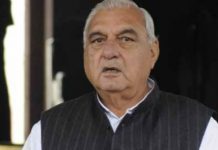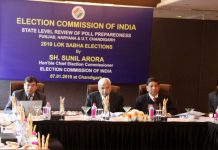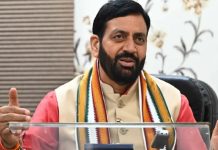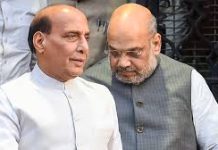
For centuries, economists have discussed and argued on two major debates. The progress of two ideologies has waxed and waned and gripped and vanished from the public mind several times. The first is the conviction that the results of capital-driven growth and development percolate downwards and improve the lives of the poor. The second is the fervour that governments have to intervene directly to lift the living standards of specific sections of the society.
For decades, post-Independent India’s economic and welfare policies were shaped by the latter thought process. Then the mindset changed in 1991, as the country aggressively embarked on the path of market-oriented reforms. The philosophy took another twist in the 2000s, when the policymakers realised that they needed to pursue both capitalist and socialist ideas in order to protect the poor, enable the rich to prosper and take care of the aspirations of the middle class.
While the nda-2 regime reiterates the position that its policies are inclusive of all classes, castes and communities, the thinking is that focussed welfarism and subsidisation should end. Except for the really poor — those who are below the poverty line — there is little need to help the others. If the country’s economy grew rapidly, as was the case with China and the East Asian tigers, the resulting prosperity would help all the citizens.
Gone are the notions that “nearly all (nations), throughout history, have been very poor”, and that nine out of 10 lives “drudge” through life. There is a resurgence of the idea that there are “economic possibilities” that can help “put mankind into the saddle”. This is similar to the contentions made by Prime Minister Narendra Modi, both before and after the 2014 general election, that his policies will help everyone and not target specific communities.
HELP THE RICH
Critics have accused the Modi sarkar of favouring big business and industry. But the PM has argued that his policies will help everyone, and if it also helps the business community, there is no problem. Critics contend that the nda-2 has forgotten how the other half lived and died, as is evident from the thousands of farmers’ suicides in the recent past. The retort to this is that the existing state of the poor is largely due to the previous regimes’ flawed welfare policies.
However, there is no denying the fact that Finance Minister Arun Jaitley has tried to make life easy for large investors. Tax policies are an indicator. First, the nda-2 announced that if a company won a tax-related case in a lower court, the former will not contest it in a higher one. This was a case of legal abdicatioin which the government was giving up its legitimate legal right. When tax notices were sent to foreign investors, Jaitley clarified that these cases will be dealt with within a month.
Similarly, the changes in the environment policies were aimed to help the rich so that it was easier to get the required clearances for mega projects. Labour laws were rejigged to help small and medium enterprises. The uproar over the proposed land acquisition Bill is broadly over the allegations that it will help businesses at the expense of local communities, who will be displaced. The manner in which Modi had crisscrossed the globe in a bid to woo large foreign investors in Germany, France, the United States, Australia and Canada has irked his critics.
Even the decisions that seemed to be against the business community, such as the auctions of telecom spectrum and coal blocks, turned out to be favourable to it. In the case of spectrum, the government promised that it will quickly ask the Defence ministry to give up excess spectrum, which will be auctioned in the near future and help telecom firms to offer better services. In the sale of coal blocks, bidding was restricted to enable certain users to grab them.
CAUGHT IN THE MIDDLE
In terms of subsidies, the urban middle class has suffered. Most of the incentives doled out by the State have vanished, or will do so in the near future. The government has brought down the cap on the number of cheap liquefied petroleum gas (LPG) cylinders that urban households can purchase and may do away with the provision altogether. Petrol and diesel prices have risen considerably over the past few years. In Delhi, petrol prices have jumped 50 percent in the past five years.
Modi’s objective is to implement the ‘Gujarat model of development’ across the country. If he succeeds in his endeavour, consumers will need to pay market rates for basic amenities such as water and electricity. The logic that was also advocated by global institutions such as the World Bank is that most users are willing to pay market rates for the services such as power and water as long as they are available for 24 hours, seven days a week, and are of requisite quality.
When it comes to taxation policies, the government has decided to impose higher rates on the middle class, while giving sops to the businessmen in the form of a promise of lower taxes in the near future. In Jaitley’s second Budget, the service tax rate was hiked and little relief was given to individual taxpayers. In addition, 10 percent tax will be deducted at source if an individual opts for premature withdrawal from his or her provident fund.
NDA-2 has repeatedly claimed that the inflation rate came down during its first year. Unfortunately, this doesn’t imply that prices have come down; only the rate at which they were increasing has been reduced. Therefore, food and fuel prices continue to remain high; the prices of potato and onion have fallen, while lady’sfinger, bitter gourd and bottle gourd have become costlier over the past few months.
This is one of the reasons why the rural and urban middle classes are angry, and the results of the Delhi Assembly election reflected it.
FURORE AMONG THE POOR
According to Jaitley’s second Budget, the expenditure on subsidies — food, fuel and fertiliser — is expected to go down by 8.5 percent in 2015-16, as compared to 2014- 15. There are reports that upa-2’s grandiose schemes such as rural employment and food security will be scrapped. But the government has denied it. In fact, Jaitley gave a slightly higher allocation to Mahatma Gandhi Natiional Rural Employment Guarantee Act (MGNREGA) in 2015-16 but ground-level reports in a few states indicate that there are serious issues with the scheme.
Some of the beneficiaries in Uttar Pradesh and Madhya Pradesh allege that the monthly payments under mgnrega have either not been paid for months or were tweaked to benefit select communities in specific regions. Experts believe that even if the scheme continues, it will be changed to restrict it to select districts in specific states and to create productive and infrastructure-related assets such as roads and wells.
No doubt the farmers are in distress. Many complain that they received cheques for 2 and 3 as State-sponsored insurance when their crops failed last winter. In BJP -ruled states, some farmers criticise the hamhanded manner in which the officials treat them. For example, in the Bundelkhand region of Madhya Pradesh, the electricity department cut off power during the harvesting season because the poor farmers were unable to pay off their dues.
Even the Bharatiya Kisan Sangh (BKS), an offshoot of the Sangh Parivar and the largest farmers’ union in the country, is upset with the Modi regime. They are angry with several other policies and initiatives of NDA-2. One of them relates to reduced official procurement of food grain in several states. This forced the farmers to opt for distress sales at rock-bottom prices, or let the crops rot. The second is about the apathy of the states after the crops were destroyed due to unexpected rain in the recent past. The BKS is also hassled with the pm’s stance on genetically- modified crop.
Modi’s response is that farmers need to stop their dependence on traditional crop and graduate to cash crop and horticulture, as they have successfully done in Gujarat. His loyalists say that Modi’s policies in the state led to multiple jumps in farm incomes because of this and other strategies. In due course, the same will happen in other states. During his election campaign, Modi promised that his policies could double the income of the farmers within a few years.
More importantly, the pm feels that welfare schemes directed at specific sections are inherently flawed. He would rather pursue different kinds of programmes that achieve the same objective. His loyalists cite the examples of Jan Dhan and Swachh Bharat, which will transform rural lives in five years. These are the ‘real’ welfare schemes; they will change the mindset of the villagers and not make them forever dependent on government doles.
editor@tehelka.com













